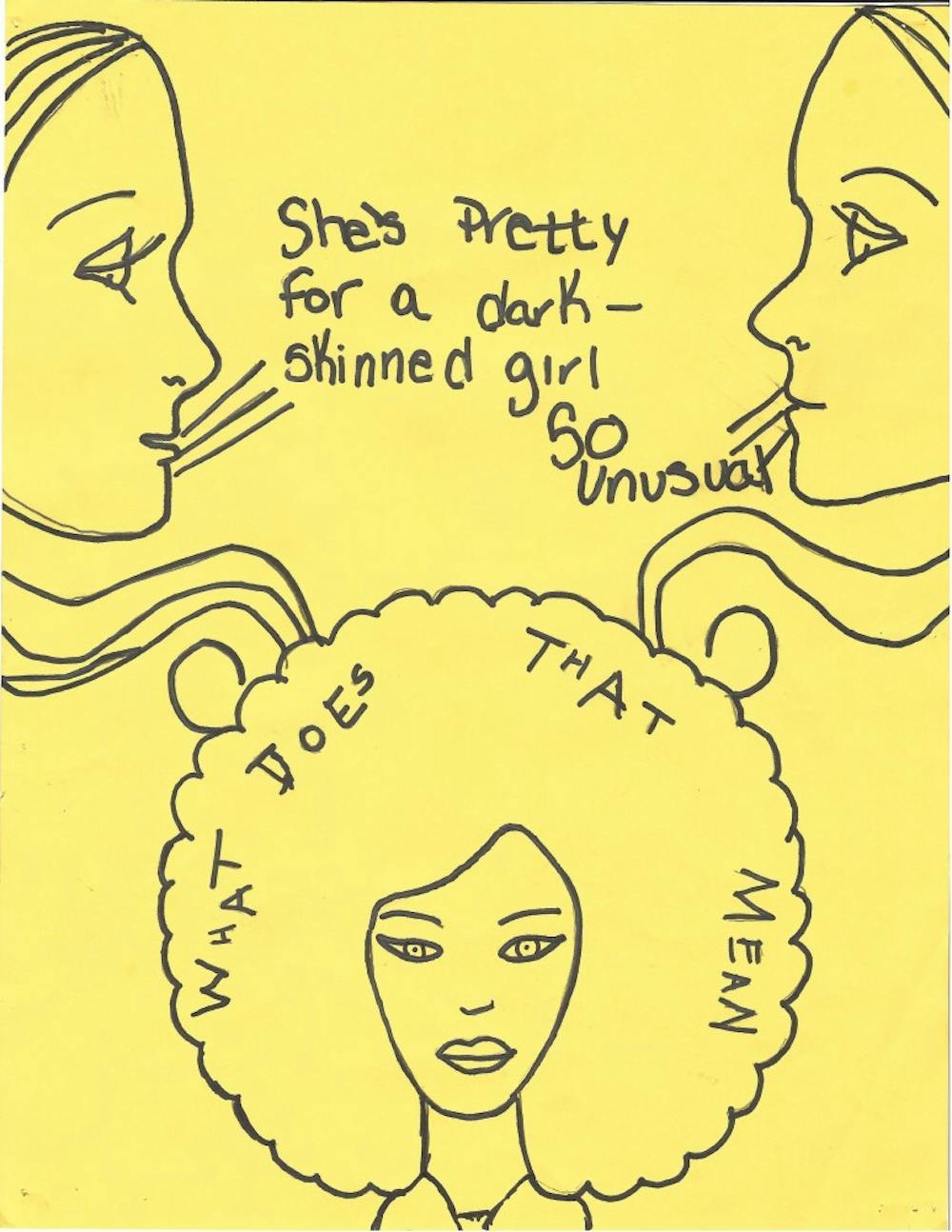Eurocentric standards of beauty advance colorism within the Black community. This skin tone based discrimination is a growing problem among our people. The media is, for the most part, responsible for women’s belief that their appearances make them undesirable.
In the days of U.S. slavery, Black people were separated by skin tone. Slave masters created an illusion, even among the African slaves, that the lighter your skin, the more “tolerable” you are. To date, this has created a separation inside of the black community.
D. Channsin Berry and Bill Duke’s 2011 documentary film Dark Girls brings attention to the issue that colorism causes in the Black community. “We as a people were so disenfranchised that we adopted some of that… a lot of that,” said one woman of the past’s influence on today. The film also displays what it is like to be a darker skinned Black girl and to be thought of as ugly.
Eurocentric images, such as straight hair, light skin, and slender facial features, are praised on Women of Color. Halle Berry and Zoe Saldana are two examples of celebrities who are celebrated as “beautiful” in the media. They both have slender facial features and light complexions, due to their mixed races. TV shows and popular entertainment magazines advertise small noses, thin lips, and angelic eyes – “a white girl dipped in chocolate,” aka a Black woman with Eurocentric features.
Viola Davis has dark skin, a larger nose, and thick lips. She also wears her hair natural. New York Times television critic, Alessandra Sandra, referred to Davis as being “less classically beautiful than (Kerry Washington).” Sandra said that Davis doesn’t look like a typical star of a network drama. Washington is another star of a hit network show, but unlike Davis, Washington has lighter skin and slender facial features. Is that what people consider classically beautiful?
Images of people such as Beyoncé, Rihanna, Lupita Nyong’o, Tyra Banks, and many others have been photoshopped to make it appear as if they were lighter then they actually are. In 2014, Lupita Nyong’o was announced to be in the February issue of Vanity Fair. When the picture released, it was clear that the star’s skin looked lightened. Many were quick to say that Nyong’o looked beautiful, but they noticed the change. Even in a professional work place, Women of Color are expected to have their hair straightened, instead of in its natural state. In 2012, a KTBS news viewer commented on meteorologist Rhonda Lee’s low cut, natural hair: “she needs to wear a wig or grow some hair.” Rhonda was later fired from KTBS after an edifying response: “Conforming to one standard isn’t what being American is about, and I hope you can embrace that.” Lee also hinted that having enhanced hair is a form of colorism, due to the privileging of “European grade of hair.” These are primetime examples of Eurocentric ideals being pushed onto Black females, to make them feel less acceptable or undesirable.
Even though this misrepresentation is ever-present in media today, many African American women are becoming affirmed. More women are wearing their hair naturally and are also embracing their characteristics. Brands like “My Melanin is Popping,” “Love My Melanin,” or “Black Girls Rock” are showing Women of Color that they are beautiful. Our natural beauty has become cultural capital among our people. A new standard of beauty is being cultivated, rather reclaimed. Being naturally beautiful may even validate everyone as beautiful. Beauty is no longer defined by the eyes of those in power.



